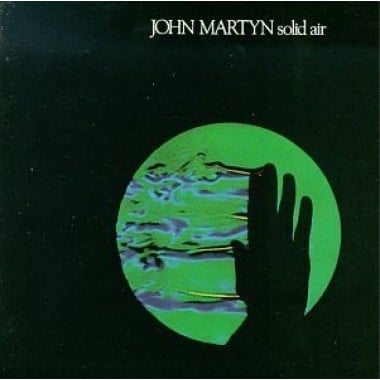'Panning' has become something of a minor obsession of mine, recently - it all started with
 the last track I recorded, "magnetic north", featuring 3 separate bass parts (1 electric upright, 2 fretless bass guitars - shaken, not stirred). No matter how many subtle (and not-so-subtle) eq adjustments I applied, the E.U.B. wasn't coming through clearly. Then an article on stereo placement I'd read years before stumbled helpfully back into my brain. It suggested drawing a stage layout diagram, showing where each player should stand/sit/mooch around looking bored during other people's solos, exactly as you wanted to hear them in the mix.
the last track I recorded, "magnetic north", featuring 3 separate bass parts (1 electric upright, 2 fretless bass guitars - shaken, not stirred). No matter how many subtle (and not-so-subtle) eq adjustments I applied, the E.U.B. wasn't coming through clearly. Then an article on stereo placement I'd read years before stumbled helpfully back into my brain. It suggested drawing a stage layout diagram, showing where each player should stand/sit/mooch around looking bored during other people's solos, exactly as you wanted to hear them in the mix.This really helped - my original plan was to have the E.U.B. in the middle, with a fretless bass off to each side. Picturing that nightmarish trio on stage, though, it made much more sense to have the E.U.B. on one side, with the main fretless part (basic melody and chordal bits) taking the centre. The version of me that was just doing little filling-in, fancy-dan stuff could stand well off to the left-hand side, and just be grateful he was on stage at all.
Now I don't claim there's anything particularly clever or unique about all that, but after a few conversations on the topic with Mr. Martin Lennon (who's currently recording an album of his fine songs, and gets mentioned on this blog far too regularly), I started paying a lot more attention to the panning on albums I personally know and would bite yer fingers off if you tried to steal from me, to see if any of them had unusual set-ups that might prove educational...
There can be, in these days of widely-available stereo enhancers, auto-spatial-expanders, and multi-dimensional-sonic-whiffle-diffusionators, quite a temptation to stretch everything as massively wide as possible - after all, you've paid good money for that 40gigabyte piano sample, and you want your listeners to hear every bloody note as if it were a foot (30cm) wide. Or by judicious mic placements, you've created a multi-channel vastness-of-a-drumkit that encompasses so much of the stereo spectrum the drummer would require a taxi to get from one end of a tom roll to the other. And I'm sure that in its place, that's lovely, fantastic, and entirely appropriate.
But not so helpful when you're trying to maintain some kind of clarity for the listener - if all your instruments are competing for the same space, then inevitably, some of them are going to lose. And start complaining about their level in the mix, and demanding you turn the sax player down instead, because their part's not so important to the vibe, and anyway, they were out of tune for half of it - yeah, shut up, you know you were...yeah? is that right? aye, yer maw an a'! Stick yer reed up yer...! Etc,etc.
So, anyhoo, after sliding through plenty of examples of HUGE production (massive flying keyboards on all sides, ranks of backing vocals attacking from wide left and right simultaneously, how many sodding guitar parts did you need...?) from the last few decades, I finally listened to one of my favourite albums for the first time through headphones...and was very surprised.
(Quick "by the way" - I'm not an enormously-walleted 'audiophile', so don't possess an acoustically-perfect 'listening room', equipped with multiple speaker arrays and gleaming, platinum-knobbed hi-fi gear. There's a 10+ year old technics cd player & cambridge amp in the sitting room which enable music to come out, and that's fine, ta. That's my excuse for not noticing certain things sooner...it's not a good excuse, but still...)
On the 1967 Cream [who invented "heavy rock", not the Kinks] classic, "Disraeli Gears",
 Ginger Baker's drums are almost entirely on the right (unless my headphone wires are somehow connected back-to-front). Jack Bruce is playing bass & singing in the middle (the vocals move slightly when he and Clapton are both singing), and Clapton's main guitar (mostly rhythm) is away to the left. And that's how they sit for the whole album. Which makes a lot of sense, given the complexity of Baker's drumming (the intensity of "We're Going Wrong", for instance) and what folk were listening to the album on at the time. It does, though, see
Ginger Baker's drums are almost entirely on the right (unless my headphone wires are somehow connected back-to-front). Jack Bruce is playing bass & singing in the middle (the vocals move slightly when he and Clapton are both singing), and Clapton's main guitar (mostly rhythm) is away to the left. And that's how they sit for the whole album. Which makes a lot of sense, given the complexity of Baker's drumming (the intensity of "We're Going Wrong", for instance) and what folk were listening to the album on at the time. It does, though, seeThere are, of course, plenty of examples of classic albums where there is "a place for everything
 , and everything in its place" - the late, great John Martyn's "Solid Air" offers wonderful clarity, even when he's "echoplex-ing" away at full blast. Placing the electric piano wide left, and keeping it in quite a narrow space over there, certainly helps. And in terms of keeping keyboards under control, even when Joe Zawinul, on Weather Report's "Heavy Weather", is using several different sounds simultaneously, each one seems carefully positioned in such a way that it doesn't overlap too much with anything else. Mind you, I'm guessing that Wayne Shorter wasn't taking any chances in his "Assistant Producer" role, and panned his saxophone far right to ensure it stayed well clear of the marauding synths.
, and everything in its place" - the late, great John Martyn's "Solid Air" offers wonderful clarity, even when he's "echoplex-ing" away at full blast. Placing the electric piano wide left, and keeping it in quite a narrow space over there, certainly helps. And in terms of keeping keyboards under control, even when Joe Zawinul, on Weather Report's "Heavy Weather", is using several different sounds simultaneously, each one seems carefully positioned in such a way that it doesn't overlap too much with anything else. Mind you, I'm guessing that Wayne Shorter wasn't taking any chances in his "Assistant Producer" role, and panned his saxophone far right to ensure it stayed well clear of the marauding synths.And, well, that's about it, really. No great revelations, merely a humble suggestion that just because you can spread every instrument all over the stereo mix, it doesn't mean you should. And why not try sticking the drums off to one side for a change? You never know, you might like it...







